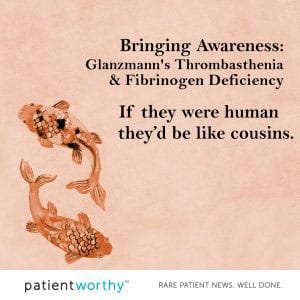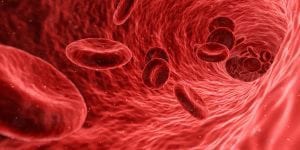Fibrinogen Deficiency (Factor I Deficiency)
What is fibrinogen deficiency (factor I deficiency)?
Factor I deficiency is a term used for four very rare, inherited fibrinogen deficiencies. The four types are:- Afibrinogenemia (no fibrinogen)
- Hypofibrinogenemia (low fibrinogen)
- Dysfibrinogenemia (normal amounts of fibrinogen but dysfunctional – incorrect clotting)
- Hypodysfibrinogenemia (low levels and dysfunctional fibrinogen)
What are the symptoms of fibrinogen deficiency?
Fibrinogen deficiency symptoms differ depending on the type of disorder someone has. Symptoms of hypo- and afibrinogenemia include:- Excessive bleeding from umbilical cord or after circumcision in babies
- Bleeding from the mouth, nose and soft tissues
- Bleeding in joints and muscles
- Difficulty carrying a child (women)
- Long, heavy periods (women)
- Easy bruising
What causes fibrinogen deficiency?
Fibrinogen deficiency is caused by inherited genes from one or both parents.How is fibrinogen deficiency diagnosed?
Fibrinogen deficiency is diagnosed using several blood tests that look for the amount of fibrinogen present in the blood and the amount of time it takes for blood to clot. Additionally, doctors will use tests to rule out any other conditions. Blood tests use to diagnose factor I deficiency include:- Prothrombin time (PT) test
- Activated partial thromboplastin time (aPTT) test
- Thrombin clotting time (TCT) test
What are the treatments for fibrinogen deficiency?
An FDA approved treatment for factor I deficiency (except for dysfibrinogenemia) is RiaSTAP ™. If RiaSTAP is not used, then replacement treatment will be administered to control or treat bleeding, in the form of fibrinogen concentrate, cryoprecipitate, or fresh frozen plasma.Where can I find out more about fibrinogen deficiency?
Fibrinogen Deficiency Articles


More Rare Than Shakespeare’s Signature? – Fibrinogen Deficiency
Kristen Lord
July 12, 2016
Read More »






